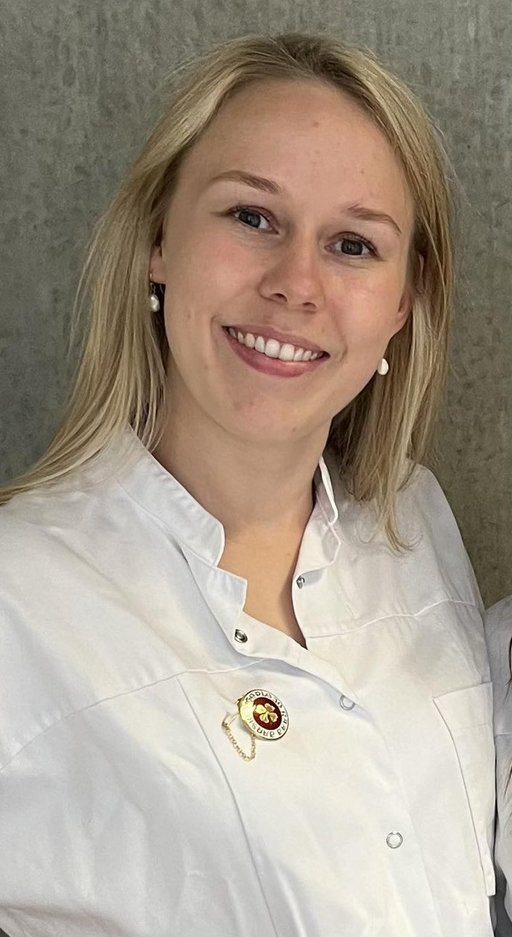Calling Japan – a joint lecture on nursing crossed the globe
Danish and Japanese students joined each other online in a joint lecture to gain unique insights about nursing approaches in their respective countries, including the significance of the different approaches. Associate Professor Cecilie Nørby Lyhne co-Zoomed the joint lecture with Toyo University in Tokyo.


It requires preparation, structure, a little time-zone adjustment and a desire to give your students a special experience, but a joint lecture is worth the trouble, says Associate Professor Cecilie Nørby Lyhne from the Department of Public Health. Recently, she and twelve Danish students on the MSc in Nursing programme Zoomed with Japan, where Professor Hiromi Watanabe from Toyo University was waiting for them with six of her students.
"The elderly population in Japan has a very long life expectancy, and Japan therefore has a lot of experience in helping elderly people, and that’s the same task we’re facing here in Denmark. So it was an obvious opportunity to collaborate with Professor Hiromi Watanabe," says Cecilie Nørby Lyhne.
The collaboration came about when the two of them met at a conference.'
"We have the same interest in preventive work within home care and nursing, so we got talking and agreed that teaching together could be rewarding for us, and for our students," says Cecilie Nørby Lyhne.
It was Cecilie’s presentation at the conference that caught Professor Hiromi Watanabe's interest. They both carry out research and teach within the field of elderly care, and it therefore seemed obvious for them to do a joint lecture, explains Hiromi Watanabe:
"I'm very interested in Cecilie's research, and in her presentation at the conference she talked about how well-trained home carers can play an important role in discovering people's needs for treatment early on, and they can coordinate treatment with doctors and nurses, so that the elderly can possibly avoid having to go to hospital. We saw a good opportunity to show our students how we work with home care in Denmark and Japan," she says.
Something to be learnt from differences
One of the students in the joint lecture was Nikoline Nielsen. Before the online class, she was not sure what to expect from a joint lecture, but the 90 minutes spent ‘across the globe’ gave her completely new insights, she says:
"I’m not really surprised, but I was thrown back nonetheless by how important culture is for the way we organise our health systems, and how we view the individual. It made me reflect on how much we can learn from each other across cultural and national borders.”
And that was exactly the idea behind the joint lecture, says Cecilie Nørby Lyhne.
"The main message of the lecture was that, although healthcare systems are different, the problems are comparable, and so are the solutions, despite the differences. I often talk to my students about broadening their searches when they’re looking for data and inspiration in their studies and in their working lives. There may very well be differences with regard to challenges and how they are managed from country to country, but we can take account of this, and we can learn from the differences."
"My most important task is to motivate and engage my students"
According to Cecilie Nørby Lyhne, planning and structuring joint teaching across international borders comes with a long list of things to do before the actual lecture:
"You have to do concentrate on aligning expectations with students and with the other lecturer. You have to think things through and decide what will benefit the students most and still work in a Zoom format, which has to be controlled," she says.
However, she also believes that the teaching format can give students additional inspiration and learning that they will be able to use after they graduate.
"My most important task is to motivate and engage my students to seek out new knowledge themselves, and to plan teaching they learn from and can remember because it stood out."

Nikoline Nielsen is also excited about the format and hopes to attend more joint lectures in her study programme.
"Hearing other people share their knowledge and experience opens up new perspectives. It encourages you to discuss and think differently about the pros and cons of how each of us views and approaches the nursing task. I've gained a better understanding of how the Japanese healthcare system is organised and structured," she says.
This is good news for future students on the MSc in Nursing programme. Cecilie Nørby Lyhne and Professor Hiromi Watanbe hope to be able to deliver a similar joint lecture annually in future. And if other teachers want to try out the format, they should just go for it, says Cecilie Nørby Lyhne:
"Find a collaboration partner who shares your interest and wants to do something meaningful together to benefit both their own and your students. From there, it’s just a matter of giving it a try. And then learning from doing.”
Contact
Associate Professor Cecilie Nørby Lyhne
Department of Public Health, Aarhus University
Tel.: +45 23985515
Mail: cnth@ph.au.dk